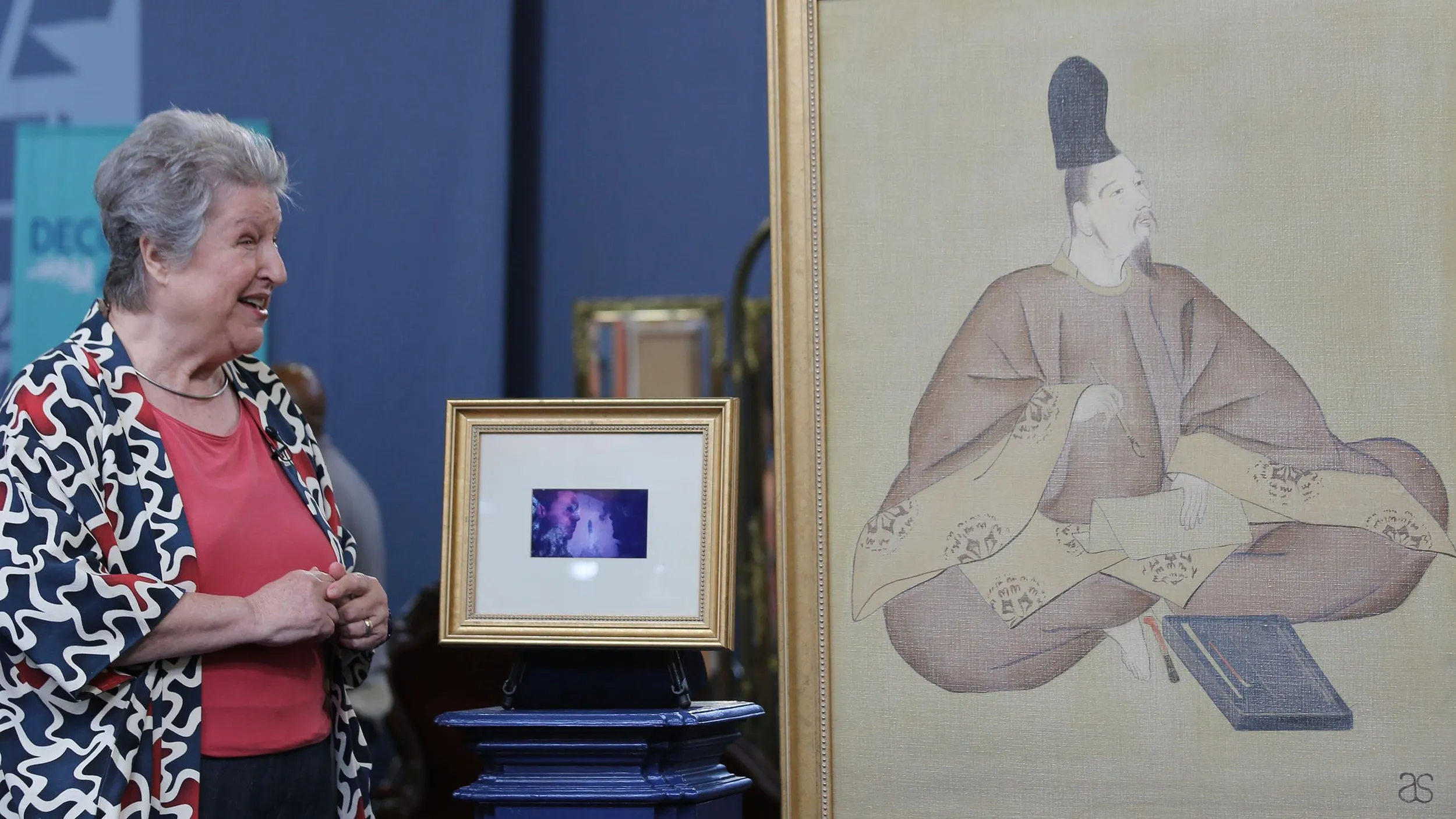GUEST: My grandmother had it. A friend of hers, I believe, had it in a shipping container on the docks of New Orleans, and she wanted it, so she bought it from the friend, as far as I know. And then it went to my mother, and now we have it here.
APPRAISER: And what timeframe was that?
GUEST: Probably in the '50s that my grandmother had it.
APPRAISER: And any other stories surrounding it?
GUEST: I had a name, that it was a Chinese goddess, but I can't pronounce the name.
APPRAISER: Okay, I think you told me that, and that's Guan Yin...
GUEST: Yes.
APPRAISER: ...which represents mercy…
GUEST: Oh, okay
APPRAISER: …and compassion. This is a figure that originally was in a temple…
GUEST: Ah.
APPRAISER: …so it was an object of veneration. It's a Chinese, polychrome- decorated, stucco figure. So this is thick clay, mixed with straw, put in a mold, and sculpted by hand. The relief parts are then painted with various pigments, including gold. You can barely see it here. And then we have incised decoration. Here is this wonderful dragon, going down the front. This had merit. But there have certainly been things that have transpired in the life of this object that have changed it from the original appearance. There are two things that didn't feel right. One was the hands. I didn't like the way the fingers are formed. When I'm looking at the way the rest of the figure has kind of a crispness, and the head did, too.
GUEST: Mh-hmm.
APPRAISER: What bothered me about the head is, it just doesn't seem to fit correctly on the body. There's something that's just awkward about it…
GUEST: Okay.
APPRAISER: …and I don't recognize the figure as Guan Yin, it doesn't seem to be right to be Guan Yin.
GUEST: Okay.
APPRAISER: And you can see that this was a larger figure, it was seated...
GUEST: Ah.
APPRAISER: ...in a very regal posture, within a temple, accompanied by a row of other similar figures…
GUEST: Oh, okay.
APPRAISER: …each representing either a real person, or symbolic of a figure such as Guan Yin, or some other figure, I don't know which one.
GUEST: Yeah.
APPRAISER: Because when I looked at the head, we saw that there is this line here, and it clearly was replaced.
GUEST: Oh! (laughing)
APPRAISER: It's lost its head! There's a difference in color of the clay that's here, and the rest of the clay. The decoration, the relief, the gilding, the dragons-- all point to an early date, from the early Ming Dynasty, or earlier, perhaps-- it's hard to tell, because so much of it's gone.
GUEST: Right.
APPRAISER: But it's possible that we could be looking at something from the 13th century to the 15th century for the main part of the figure, but not the head. And not the hands. And not some of these other areas that have been repaired.
GUEST: Right.
APPRAISER: The replacements probably occurred sometime in the late 19th, early 20th century. And it's not that they were created at that time, although, these hands may have been created at that time, I'm not sure. But the head, I think, comes from a different figure at an earlier date, just not as early as the rest of the figure. At an auction sale, I believe this would realize somewhere between $5,000 and $8,000 at auction.
GUEST: Thank you! This is more than I ever knew before, so I appreciate it.



